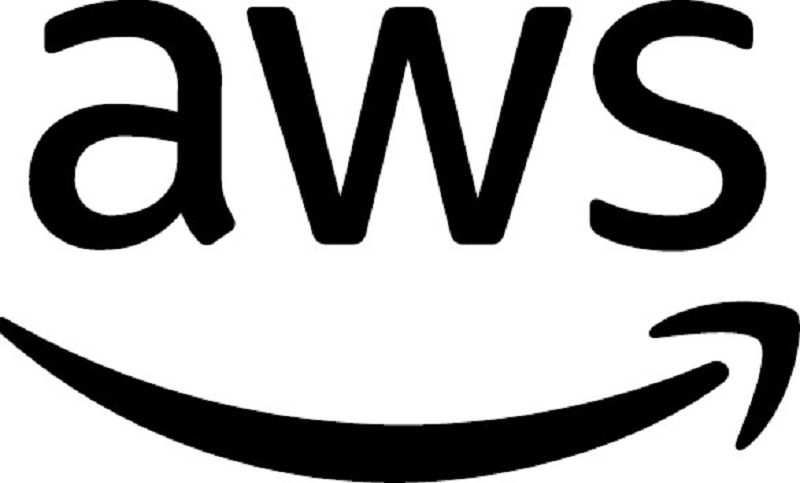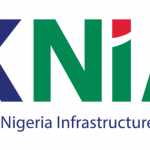Technology
How Do You Know When to Buy Versus Build Your Software?

By Dalip Jaggi
Businesses of all different sizes today depend on various software applications to help them manage multiple core elements of their operations. These solutions support everything from supply chain management and bookkeeping projects to detailed project tracking and customer relationship management.
As businesses grow and evolve, however, they often reach a fork in the road where they need to decide whether to continue relying on highly accessible, ready-made software or invest in building a custom solution that’s specifically designed to fit their needs.
The truth is, there is no perfect answer to this question, and the best choice will depend on various factors unique to each business. However, by understanding the strengths and weaknesses of each approach, you’ll be able to make a good decision for your organization that will help it achieve its long-term goals.
What are Ready-Made Software Solutions?
It doesn’t matter what industry you’re in – there’s likely an abundance of ready-made software solutions available for you to take advantage of. These solutions, often called “enterprise solutions,” are built to be useful for a wide range of business types and can be particularly helpful for larger companies with intricate organizational structures.
One of the major benefits of these solutions is their high accessibility. They’re incredibly easy to purchase, and once you’ve set up an account or paid your subscription, you’re essentially ready to go. Depending on the software’s purpose, your organization could quickly see improvements in various areas.
However, while ready-made solutions offer versatility, their design can also be somewhat restrictive. Because they primarily focus on catering to a broad spectrum of businesses and industries, they often include a range of general features, some of which may not be relevant or valuable to your specific needs.
How are Custom Builds Different?
Custom software development differs from ready-made solutions since it provides a completely custom experience. It’s similar to going to a custom tailor to purchase a hand-made suit rather than just purchasing one off the shelf at a department store.
The main purpose of moving forward with a custom software build is to maximize the value of your investment. Instead of purchasing a generic software package with numerous features you more than likely will never use, you receive a comprehensive solution made exclusively for your business needs, ensuring minimal resource waste.
Naturally, developing a solution from scratch comes at a premium cost. The price of custom-built software can range from thousands to hundreds of thousands of dollars for larger organizations. However, these solutions are designed to unlock a business’s full growth potential which could very well lead to substantial returns on investment over longer periods of time.
Questions to Ask Yourself When Deciding Between Buying or Building Software
Choosing between purchasing or building software is an important decision to make. Each business should carefully evaluate its own specific requirements and budget constraints before deciding.
To help guide you through this process, consider these four key questions:
How is the Software Going to Be Used?
Each software application is designed with a core objective in mind. It’s important to ensure this objective complements your unique business goals.
Remember, many businesses share common needs, whether it’s improved financial management, better team communication, or so on. However, software solutions may not cater to every industry’s unique scope and could lack key features crucial for success in your particular sector.
If the software offers the competitive advantage and desired functionality you’re looking for, it’s worth looking into more. But, if essential elements are missing, think about exploring whether a custom solution better suits your needs.
How Will the Structure of My Company Impact Implementation?
When considering a custom software development project, it’s important to assess your organization’s current structure and capacity. Smaller businesses or those with limited resources might find it challenging to manage these types of projects. Even with outsourcing, significant internal collaboration and resources are crucial for successful implementation.
If your teams aren’t equipped to handle larger projects, consider using a ready-made solution, if not for anything but a temporary solution. This approach can be more efficient until you’ve scaled your workforce and have enough support to assist with a larger-scale development project.
What are the Features I “Want” Versus the Ones I “Need”?
Adapting ready-made software to perfectly suit your company’s needs is many times challenging or simply not doable. Often, these solutions come with limitations on customization, similar to how home renovation project scopes are limited to the foundation of a home.
To help you decide on the right path, it’s important to distinguish between the features you “want” and the features you “need.” While compromising on certain features is sometimes necessary, you can’t afford to settle for software lacking the core functions your business needs to grow.
If your research shows that many ready-made software options fall short of your requirements, consider exploring custom software solutions.
How Many Resources Can I Afford to Invest?
When considering software options, budget is a crucial factor. Ready-made solutions generally offer more transparent pricing, making it easier to predict your initial investment.
Just like when renovating a home – custom projects can come with unforeseen expenses, both during development and for ongoing maintenance, upgrades, and security.
However, with custom software, you have the power to design the development roadmap and prioritize your spending. While a ready-made solution might seem cheaper upfront, the long-term benefits and cost savings of a custom solution could be more advantageous for your business.
Find the Right Fit For Your Business Needs
The market is flooded with software options that businesses can use to help them expand. However, before committing to a recurring subscription model, it’s important to weigh the factors discussed and think about whether a customized software solution might be a better idea to explore.
Technology
Lagos’ Team Nevo Wins 3MTT Southwest Regional Hackathon

By Adedapo Adesanya
Lagos State’s representative, Team Nevo, won the 3 Million Technical Talent (3MTT) South-West Regional Hackathon, on Tuesday, December 9, 2025.
The host state took the victory defeating pitches from other south west states, including Oyo, Ogun, Osun, Ekiti, and Ondo States.
This regional hackathon was a major moment for the 3MTT Programme, bringing together young innovators from across the South-West to showcase practical solutions in AI, software development, cybersecurity, data analysis, and other key areas of Nigeria’s digital future.
Launched by the Federal Ministry of Communications, Innovation, and Digital Economy, the hackathon brought together talented young innovators from across the Southwest region to showcase their digital solutions in areas such as Artificial Intelligence (AI)/Machine Learning, software development, data analysis, and cybersecurity, among others.
“This event not only highlights the potential of youth in South West but also advances the digital economy, fosters innovation, and creates job opportunities for our young people,” said Mr Oluwaseyi Ayodele, the Lagos State Community Manager.
Winning the hackaton was Team Nevo, made up of Miss Lydia Solomon and Mr Teslim Sadiq, whose inclusive AI learning tool which tailors academic learning experiences to skill sets of students got the top nod, with N500,000 in prize money.
Team Oyo represented by Microbiz, an AI business tool solution, came in second place winning N300,000 while Team Ondo’s Fincoach, a tool that guides individuals and businesses in marking smarter financial decisions, came third with N200,000 in prize money.
Others include The Frontiers (Team Osun), Ecocycle (Team Ogun), and Mindbud (Team Ekiti).
Speaking to Business Post, the lead pitcher for Team Nevo, Miss Solomon, noted, “It was a very lovely experience and the opportunity and access that we got was one of a kind,” adding that, “Expect the ‘Nevolution’ as we call it, expect the transformation of the educational sector and how Nevo is going to bring inclusion and a deeper level of understanding and learning to schools all around Nigeria.”
Earlier, during his keynote speech, the chief executive officer (CEO) of Sterling Bank, Mr Abubakar Suleiman, emphasised the need for Nigeria’s budding youth population to tap into the country’s best comparative advantage, drawing parallels with commodities and resources like cocoa, soyabeans, and uranium.
“Tech is our best bet to architect a comparative advantage. The work we are doing with technologies are very vital to levelling the playing field.”
Technology
re:Invent 2025: AWS Excites Tech Enthusiasts With Graviton5 Unveiling

By Aduragbemi Omiyale
One of the high points of the 2025 re:Invent was the unveiling of Graviton5, the fifth generation of custom Arm-based server processors from Amazon Web Services (AWS).
Many tech enthusiasts believe that the company pushed the limits with Graviton5, its most powerful and efficient CPU, frontier agents that can work autonomously for days, an expansion of the Amazon Nova model family, Trainium3 UltraServers, and AWS AI Factories suitable for implementing AI infrastructure in customers’ existing data centres.
Graviton5—the company’s most powerful and efficient CPU
As cloud workloads grow in complexity, organizations face a persistent challenge to deliver faster performance at lower costs and meet sustainability commitments without trade-offs.
AWS’ new Graviton5-based Amazon EC2 M9g delivers up to 25% higher performance than its previous generation, with 192 cores per chip and 5x larger cache.
For the third year in a row, more than half of new CPU capacity added to AWS is powered by Graviton, with 98 per cent of the top 1,000 EC2 customers—including Adobe, Airbnb, Epic Games, Formula 1, Pinterest, SAP, and Siemens—already benefiting from Graviton’s price performance advantages.
Expansion of Nova family of models and pioneers “open training” with Nova Forge
Amazon is expanding its Nova portfolio with four new models that deliver industry-leading price-performance across reasoning, multimodal processing, conversational AI, code generation, and agentic tasks. Nova Forge pioneers “open training,” giving organizations access to pre-trained model checkpoints and the ability to blend proprietary data with Amazon Nova-curated datasets.
Nova Act achieves breakthrough 90% reliability for browser-based UI automation workflows built by early customers. Companies like Reddit are using Nova Forge to replace multiple specialized models with a single solution, while Hertz accelerated development velocity by 5x with Nova Act.
Addition of 3 frontier agents, a new class of AI agents that work as an extension of your software development team
Frontier agents represent a step-change in what agents can do. They’re autonomous, scalable, and can work for hours or days without intervention. AWS announced three frontier agents—Kiro autonomous agent, AWS Security Agent, and AWS DevOps Agent. Kiro autonomous agent acts as a virtual developer for your team, AWS Security Agent is your own security consultant, and AWS DevOps Agent is your on-call operational team.
Companies, including Commonwealth Bank of Australia, SmugMug, and Wester Governors University have used one or more of these agents to transform the software development lifecycle.
Unveiling Trainium3 UltraServers
As AI models grow in size and complexity, training cutting-edge models requires infrastructure investments that only a handful of organizations can afford.
Amazon EC2 Trn3 UltraServers, powered by AWS’s first 3nm AI chip, pack up to 144 Trainium3 chips into a single integrated system, delivering up to 4.4x more compute performance and 4x greater energy efficiency than Trainium2 UltraServers.
Customers achieve 3x higher throughput per chip while delivering 4x faster response times, reducing training times from months to weeks. Customers including Anthropic, Karakuri, Metagenomi, NetoAI, Ricoh, and Splash Music are reducing training and inference costs by up to 50 per cent with Trainium, while Decart is achieving 4x faster inference for real-time generative video at half the cost of GPUs, and Amazon Bedrock is already serving production workloads on Trainium3.
Technology
NITDA Alerts Nigerians to ChatGPT Vulnerabilities

By Adedapo Adesanya
The National Information Technology Development Agency (NITDA) has issued an advisory on new vulnerabilities in ChatGPT that could expose users to data-leakage attacks.
According to the advisory, researchers discovered seven vulnerabilities affecting GPT-4o and GPT-5 models that allow attackers to manipulate ChatGPT through indirect prompt injection.
The agency explained that hidden instructions placed inside webpages, comments, or Uniform Resource Locators (URLs) can trigger unintended commands during regular browsing, summarisation, or search actions.
“By embedding hidden instructions in webpages, comments, or crafted URLs, attackers can cause ChatGPT to execute unintended commands simply through normal browsing, summarization, or search actions,” they stated.
The warning followed rising concerns about AI-powered tools interacting with unsafe web content and the growing dependence on ChatGPT for business, research, and public-sector tasks.
NITDA added that some flaws allow the bypassing of safety controls by masking malicious content behind trusted domains.
Other weaknesses take advantage of markdown rendering bugs, enabling hidden instructions to pass undetected.
It explained that in severe cases, attackers can poison ChatGPT’s memory, forcing the system to retain malicious instructions that influence future conversations
They stated that while OpenAI has fixed parts of the issue, Large-Language Models (LLMs) still struggle to reliably separate genuine user intent from malicious data.
The Agency warned that these vulnerabilities could lead to a range of cybersecurity threats, including unauthorised actions carried out by the model; unintended exposure of user information; manipulated or misleading outputs; and long-term behavioural changes caused by memory poisoning, among others.
It advised Nigerians, businesses, and government institutions to adopt several precautionary steps to stay safe. These include limiting or disabling the browsing and summarisation of untrusted websites within enterprise environments and enabling features like browsing or memory only when necessary.
It also recommended regular updates to deployed GPT-4o and GPT-5 models to ensure known vulnerabilities are patched.
-

 Feature/OPED6 years ago
Feature/OPED6 years agoDavos was Different this year
-
Travel/Tourism9 years ago
Lagos Seals Western Lodge Hotel In Ikorodu
-

 Showbiz3 years ago
Showbiz3 years agoEstranged Lover Releases Videos of Empress Njamah Bathing
-

 Banking7 years ago
Banking7 years agoSort Codes of GTBank Branches in Nigeria
-

 Economy3 years ago
Economy3 years agoSubsidy Removal: CNG at N130 Per Litre Cheaper Than Petrol—IPMAN
-

 Banking3 years ago
Banking3 years agoFirst Bank Announces Planned Downtime
-

 Banking3 years ago
Banking3 years agoSort Codes of UBA Branches in Nigeria
-

 Sports3 years ago
Sports3 years agoHighest Paid Nigerian Footballer – How Much Do Nigerian Footballers Earn












